Hello, my name’s Andrew, and these are the fifty best barefoot shoes, boots, and sandals for hiking, running, cross-training, casual, and everything in between.
Introduction
Back in 2017 I bought a pair of Vibram FiveFingers and they were so lightweight and durable that I literally thought I might never buy another barefoot shoe.
But over the years I realized there were a lot of other great brands out there that worked even better for certain conditions, like snow, or rain, or casual, or backpacking, or just hanging around the house.
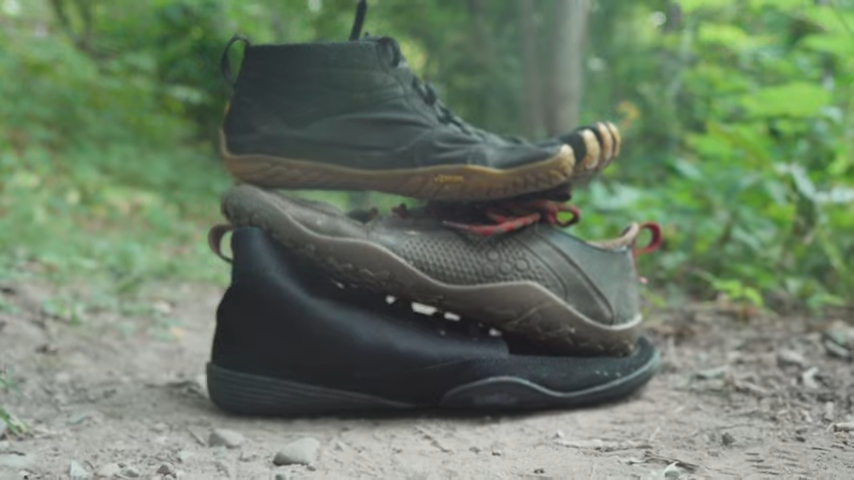
Best Barefootwear
So I set out on this mission to find the best barefoot shoes in the world, but because there are way more than fifty, I’ve divided this video into sections and added timestamps, full reviews, and purchase links below.
Plus, you can always use the shoe finder tool at my website barefootwear.org to filter hundreds of brands and products by width, thickness, climate, and a whole bunch of other metrics that make it easy to narrow down your search.
Rules & Scoring
For anyone who’s new to barefooting, you can watch my Barefoot Story or Zero-Drop Transition videos to learn more about why and how to go minimal.
But in general my four rules for barefoot shoes are…
Also, although there’s no best shoe for everything, I’ve given each one a score that generally reflects how “barefoot” they are based on the criteria above.
Finally, some of these shoes I bought and some I asked brands to send free of charge for testing, but I have so many now that it literally makes no difference to me anymore, other than just having new styles to share with you guys.
That said, let’s talk barefoot! (:
Barefoot Shoes
The first category we’re going to cover is barefoot shoes, which are definitely the most versatile option for all-season multi-activity use.
Casual Barefoot Shoes
Contrary to what you might expect, there are a lot of good looking options for casual, and, honestly, unless I’m using something with separate toes, most people don’t even notice that wearing barefoot shoes.

1. Splay Freestyle (90%)
The Splay Freestyle has a wide toebox, tough canvas upper, medium 6.5mm zero-drop sole with great flexibility, and semi-aggressive tread for roads and gravel.
Which makes the Feeestyle a solid option for beginners or anyone who wants a little more protection for casual and walking, or even some light skateboarding, although the cotton canvas is less breathable for hot days and the denser sole might feel like overkill for more experienced barefooters.

2. Vivobarefoot Sensus (94%)
The Vivobarefoot Sensus has a wide toebox, soft leather upper, ultra thin 3mm zero-drop sole with superb flexibility, and minimal tread for roads and light trails.
Having the best ground feel of any shoe I’ve tried the Sensus is ideal for urban casual and walking long miles or working a standing job in both hot and cool weather, although the thin tread will wear faster on rougher surfaces, like gravel, and they do have less room vertically.

3. Vivobarefoot Ababa (94%)
The Vivobarefoot Ababa has a wide toebox, medium soft leather upper, thin 4mm zero-drop sole with excellent flexibility, and minimal tread for roads and light trails.
With the stretchy collar the Ababa is a super versatile option for both indoor use as a slipper and outdoor use for urban casual, although the looser fit makes it less practical for longer walks and the flat stitched upper could be too snug for high arches.

4. Mukishoes Jasper (96%)
The Mukishoes Jasper has an extra-wide toebox, roomy cotton upper, ultra thin 3.5mm zero-drop sole with superb flexibility, and a minimal tread for roads.
Unlike Vivobarefoot, Mukishoes has lots of room for high volume feet but with some amazing ground feel for urban casual, although the cotton can get a little damp in hot weather and the sole will wear faster on rough terrain.

5. Vivobarefoot Gobi (95%)
The Vivobarefoot Gobi has a wide toebox, water-resistant leather upper, thin 4mm zero-drop sole with excellent flexibility, and minimal tread for roads and light trails.
Because of the dense leather, the Gobi is a good pick for dealing with multiple climates and it also looks classy enough to use for business or formalwear, although it is less breathable for hotter days and the leather can feel a bit stiff at first before it starts to soften up.
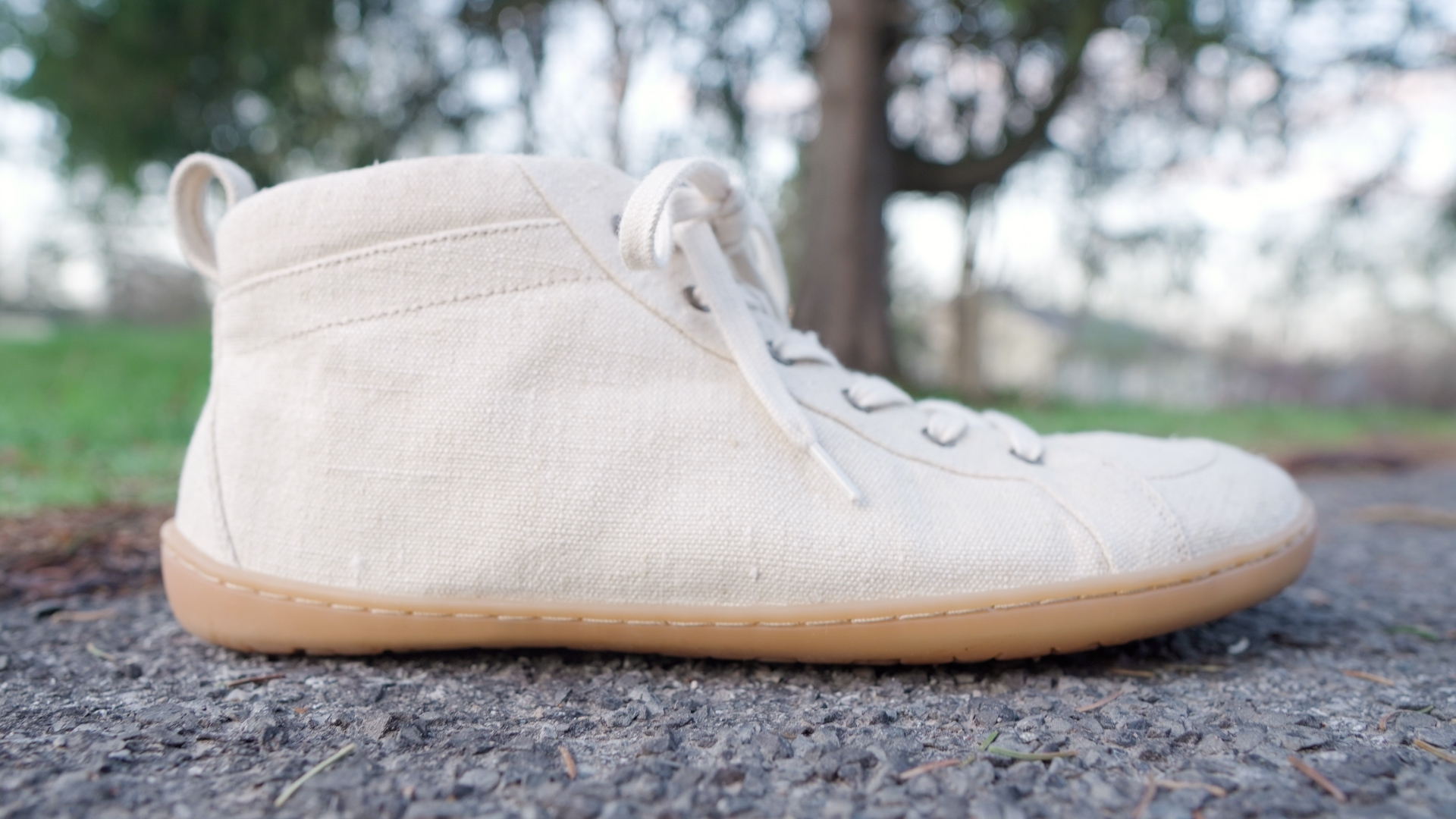
6. Mukishoes Duna (96%)
The Mukishoes Duna has an extra-wide toebox, undyed organic cotton-hemp canvas upper, ultra thin 3.5mm zero-drop sole with superb flexibility, and minimal tread for roads.
But while the Duna is still super roomy, the higher cut and thicker fabric add more security for medium width feet and the minimal sand upper looks really good with a fresh pair of chinos, although, like the Jasper, the lightweight sole will wear out faster on rocks and gravel.
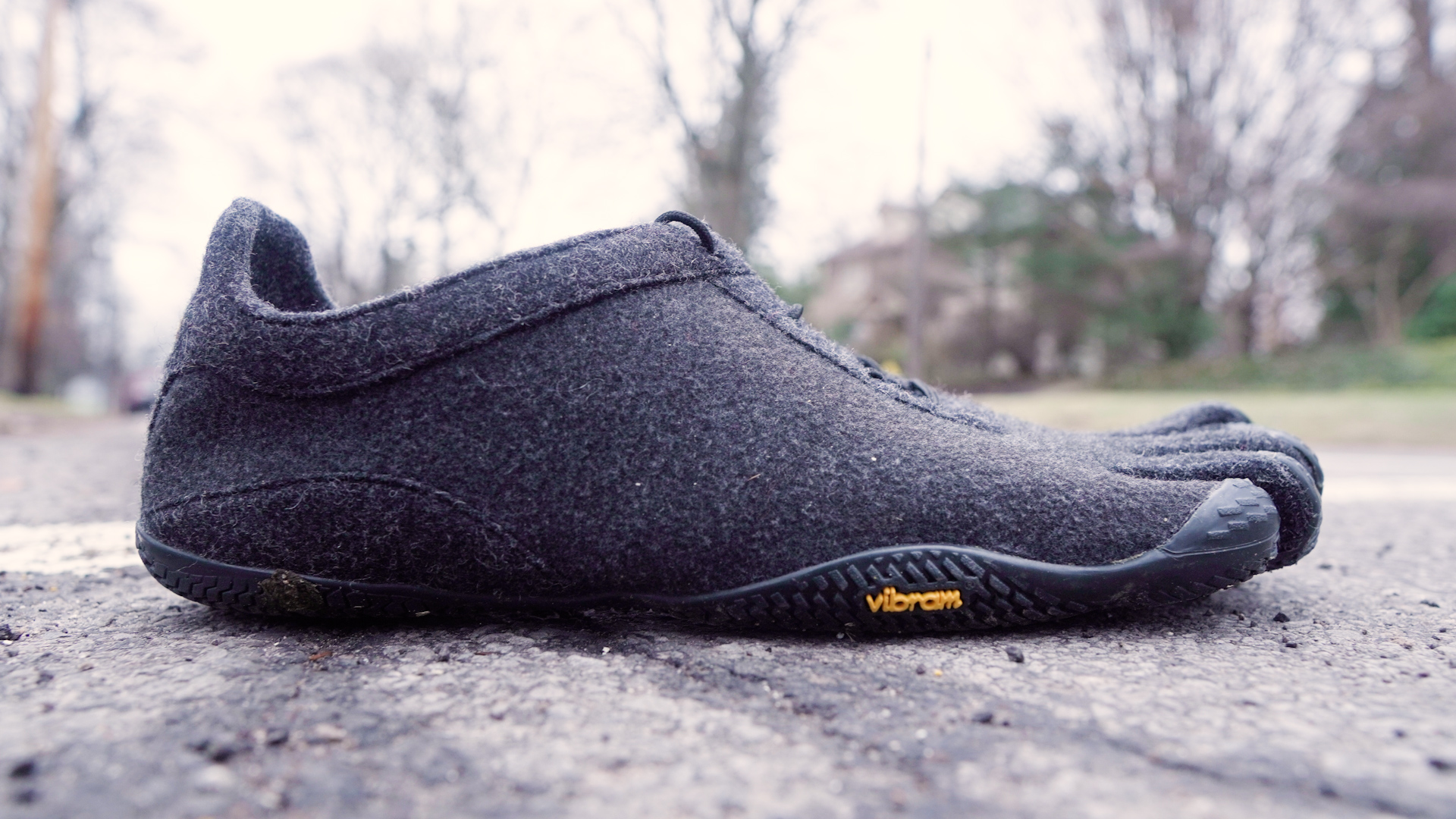
7. Vibram KSO ECO Wool (95%)
The Vibram KSO ECO Wool has extra-wide separate toes, a highly breathable wool blend upper, ultra thin 3mm zero-drop sole with superb flexibility, and minimal tread for roads and dry trails trails.
For colder days the ECO Wool provides more warmth and also looks more like a traditional shoe than other Vibram’s, while still providing some excellent traction and durability for walking, hiking, and trail running on firm ground, although wind and water will come straight through the soft fabric.

8. Aylla Tiksi Winter (90%)
The Aylla Tiksi Winter has a wide toebox, water-resistant leather upper, thick fur insulation, medium 6mm zero-drop sole with great flexibility, and a semi-aggressive tread for roads and trails.
Honestly, the Tiksi is warmest low-cut shoe I’ve ever worn and the leather upper is also great for slogging through parking lot slush or doing some light hiking with a lot less weight than a heavier snow boot, although it’s a good idea to roll your pants down to keep the wind out.

9. Wildling Chestnut (95%)
The Wildling Chestnut has a medium wide toebox, lightweight wool/hemp upper, water-resistant membrane, ultra-thin 3.5mm zero-drop sole with superb flexibility, and minimal tread for roads and light trails.
What I love about Wildling is how their shoes feel so natural, like you could just release them into a local forest, and the split tabi-style sole is as agile as you can get without going full toe shoe, although they’re not waterproof and the membrane can overheat indoors or in warmer weather.

10. KOW Slippers (96%)
The Kingdom of Wow Slippers have a wide toebox, temperature-regulating bamboo/wool knit upper, ultra thin leather sole with superb flexibility, flat tread for indoor use.
Surprisingly, my KOW’s held up really well for a knit slipper and the blended fabric creates some nice insulation and breathability for both warm and cold days, although if your house is really cold, you might want to wear them with some Injinji merino wool toe socks or go with the higher cut slipper boot.
Content type (toDo) not found.
Barefoot Training Shoes
Although it might seem like barefoot shoes are too minimal for training, the thin sole actually helps train your body to cushion itself and provides a much more stable base, which is why I’ve been running and even lifting in them for seven years.

11. Groundies Active (76%)
The Groundies Active has a medium toebox, vegan upper, medium 5.5mm zero-drop sole with excellent flexibility, and minimal sole for roads and gravel.
Generally, Groundies shoes have a sleek modern design, but at a reasonable price, and the Active’s denser tread is versatile for rougher terrain, while the tightly-woven fabric helps keep out a bit of rain, although it is somewhat less breathable in hot weather and the sole is probably thicker than necessary, if you’re just going to be on roads.
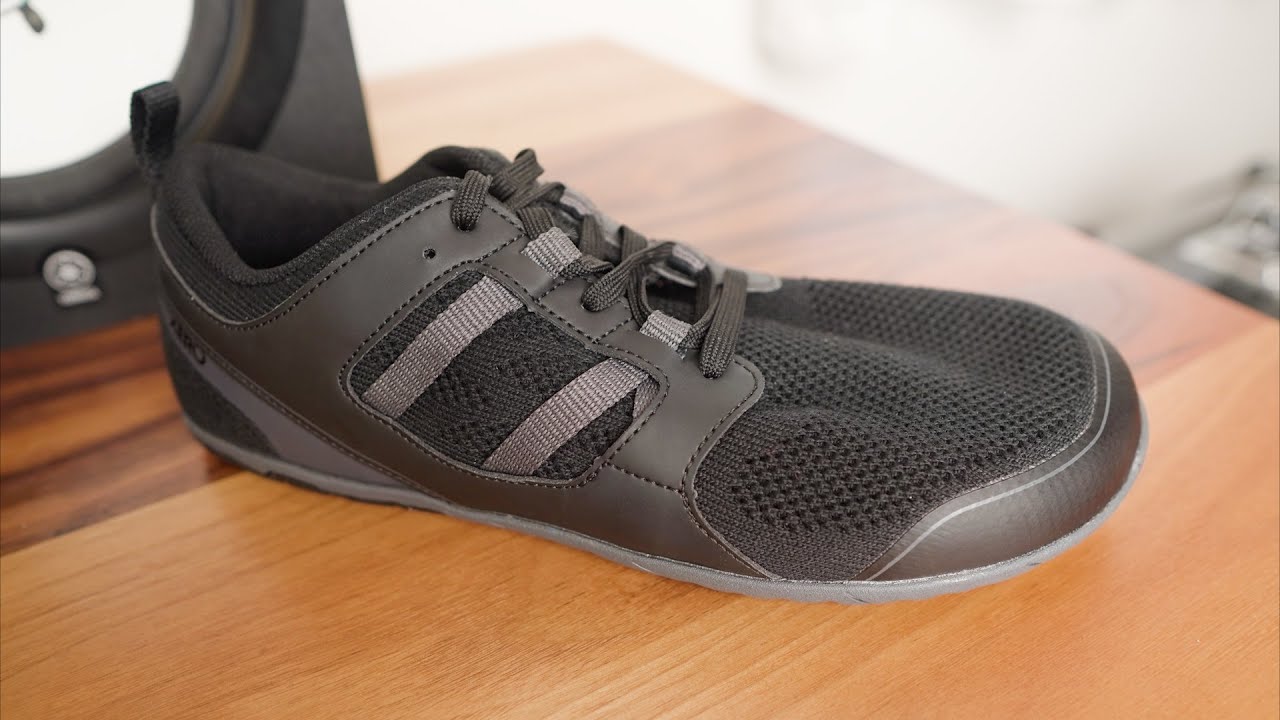
12. Xero Zelen (84%)
The Xero Zelen has a wide toebox, breathable vegan mesh upper, medium thin 5mm zero-drop sole with excellent flexibility, and semi-aggressive tread for roads and trails.
When it comes to value it’s hard to beat the Zelen, because it’s got some solid support for cross-training, snappy performance for road running, and extra traction for trails, all at barely over 200 grams with a 5,000-mile warranty, although the design is more basic and the toebox might not be wide enough for extra-wide feet.

13. Xero HFS (86%)
The Xero HFS has a wide toebox, breathable vegan mesh upper, medium 6mm zero-drop sole with excellent flexibility, and minimal tread for roads and trails.
Basically, the HFS is like a beefed up version of the Zelen with more side support and protection, but still some great breathability and a versatile tread for anything from gym workouts to trail running and hiking, although the extra mm does make them slightly heavier and less responsive than the Zelen.

14. Freet Vibe (86%)
The Freet Vibe has a wide toebox, breathable vegan mesh upper, thin 4mm sole zero-drop with excellent flexibility, and semi-aggressive tread for roads and trails.
Apart from the cool factor of using recycled materials, like “coffee grounds,” Freet shoes tend to be super light and agile with a comfy padded lining and hybrid tread, which makes them a great all-terrain option, although the mesh is medium thick and can heat up a bit in hot weather.

15. Be Lenka Dash (86%)
The Be Lenka Dash has an extra-wide toebox, vegan mesh upper, slip-on sock liner, thin 4mm zero-drop sole with supeb flexibility, and minimal tread for roads.
One thing I love about the Dash is the softness of the rubber, because it grips really well on roads and makes even asphalt feel smooth, although it does have a looser fit and can get sweaty running in hotter weather due to the less breathable sock liner.
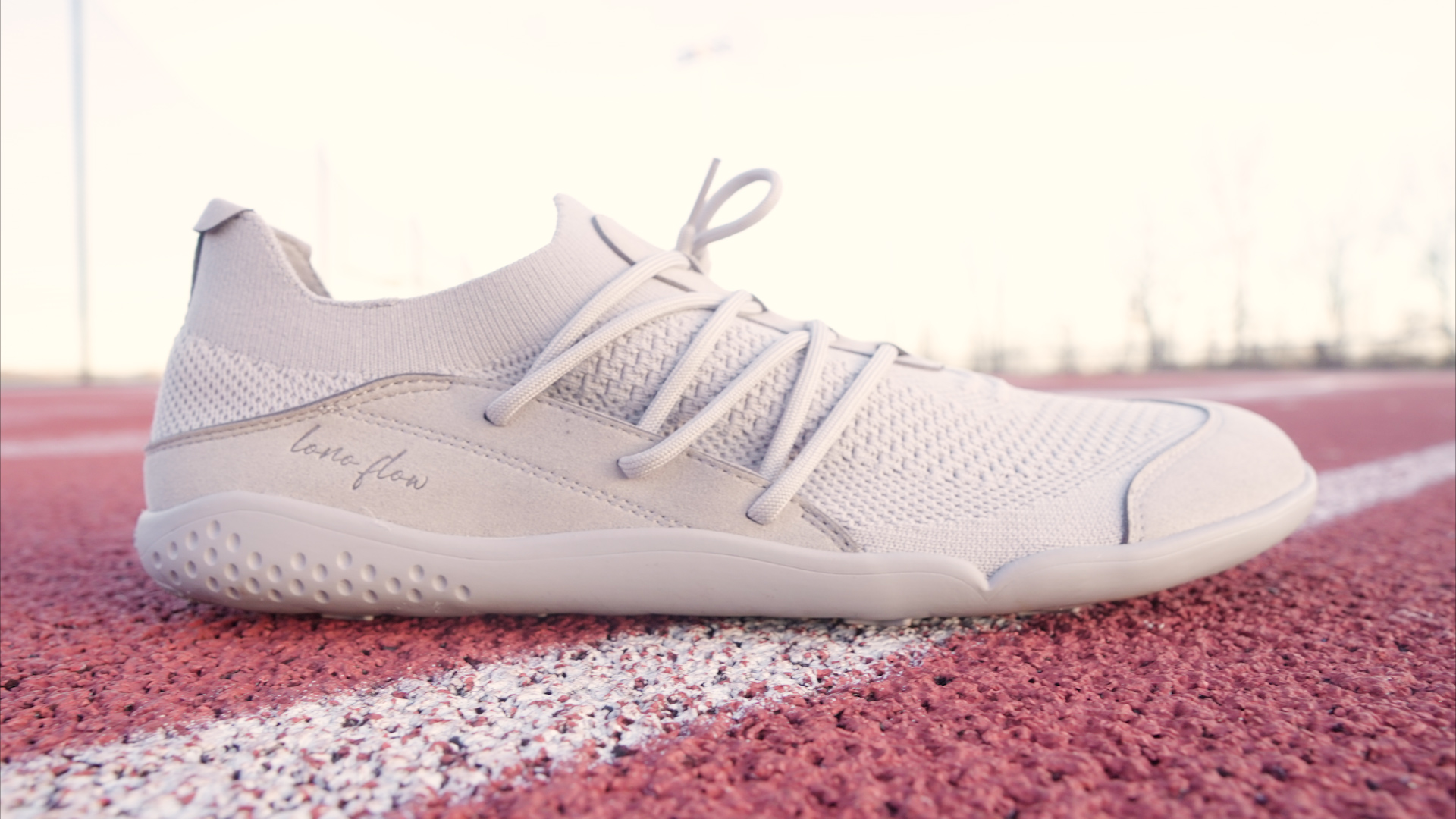
16. Lono Flow (86%)
The Lono Flow has a wide toebox, breathable mesh upper, slip-on collar, light padding, medium 6mm zero-drop sole with great flexibility, and minimal tread for roads and light trails.
Other than being one of the most affordable barefoot shoes, the Flow is also biodegradable with a stretchy sock liner for cause use, but also some nice side support for cross-training and grip pads for road running, although the nibs can be slippery on wet surfaces and the sole may feel like overkill for veteran barefooters.
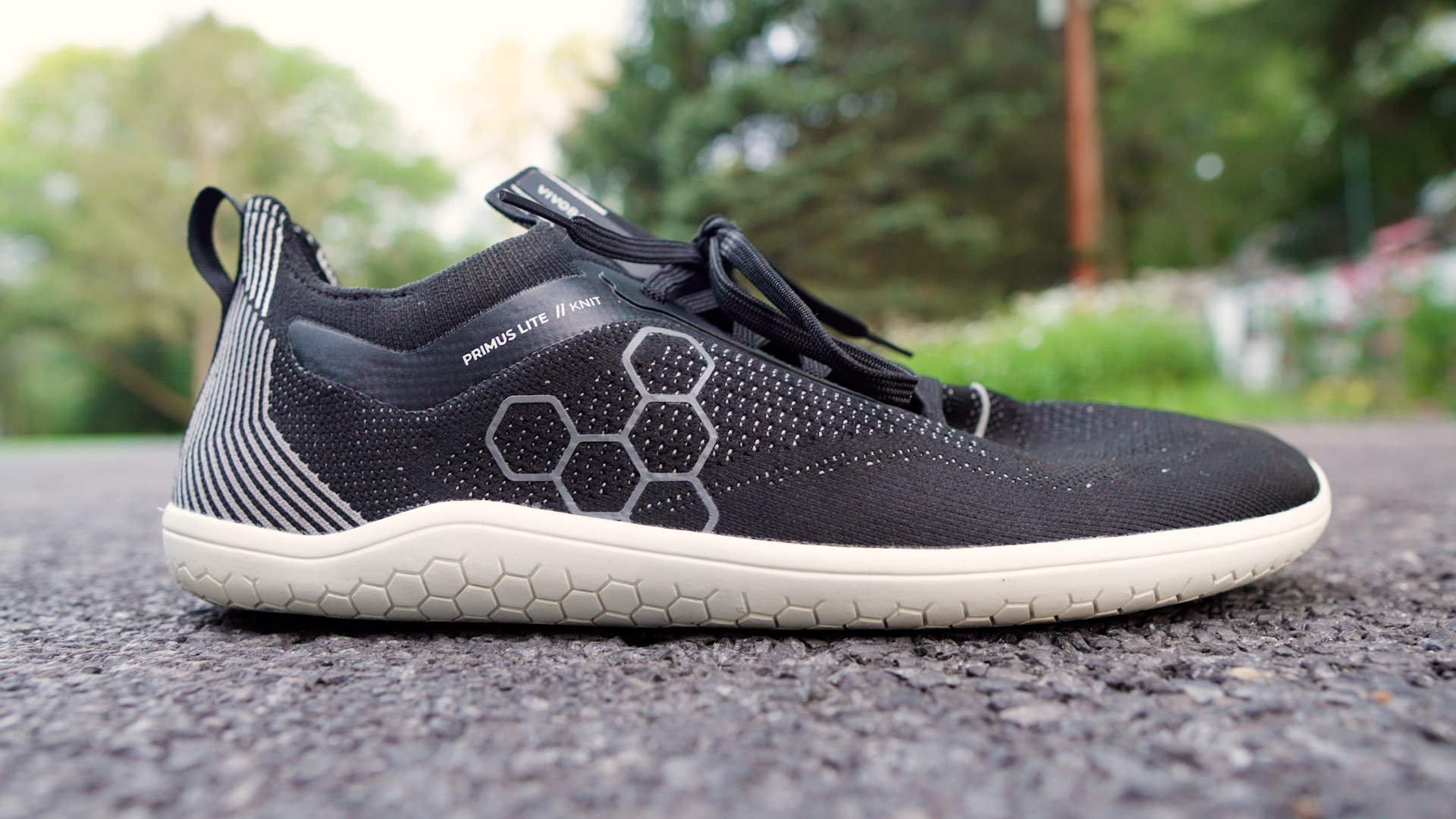
17. Vivobarefoot Primus Lite/Knit/Asana (84–94%)
The Vivobarefoot Primus has a wide toebox, mesh, knit, or leather upper, thin 4mm zero-drop sole with excellent flexibility, and minimal tread for roads and light gravel.
It comes in three styles: the Primus Lite (for serious cross-training), the Primus Lite Knit (for a mix of cross-training and casual), and the Primus Asana for casual and lightweight activities, like yoga, but all three provide some excellent ground feel and durability, although for a more premium price.
Barefoot Hiking/Trail Shoes
While people oftentimes think of boots first for hiking, I honestly spend most of my time on trails in lower cut barefoot shoes, because they’ve got plenty of protection but a lot more agility for trail running.

18. Xero Prio (79%)
The Xero Prio has a wide toebox, vegan mesh upper, medium 5.5mm zero-drop sole with great flexibility, and a semi-aggressive tread for roads and trails.
Like a lot of Xero’s shoes, the Prio’s budget-friendly and super versatile for all-terrain use, but it’s slightly better on wet trails than the Zelen or HFS and has a tougher upper overall to resist scrapes and tears, although the toebox does get somewhat pointy toward the tip.

19. Vibram V-NEOP (83%)
The Vibram V-NEOP has extra-wide separate toes, a neoprene upper, thin 4mm zero-drop sole with superb flexibility, and minimal tread for roads, trails, and water.
Basically it’s like a wetsuit for your feet and provides some great insulation slogging through mud, hiking on cooler days, or even swimming, although the flat tread isn’t grippy enough for trail running on steep slippery hills.

20. Vivobarefoot Primus Trail Knit FG (86%)
The Vivobarefoot Primus Trial FG has a wide toebox, breathable mesh or stretchy knit upper, medium 5.5mm zero-drop sole with great flexibility, and firm ground tread for trails.
While the original mesh is perfect for hotter/faster hikes and trail runs, the Knit version is a bit wider and more comfortable with some added protection for colder days, and overall the FG sole is super versatile for all-terrain use, although it’s not as aggressive for wet/slippery hills.

21. Vivobarefoot Magna Lite WR SG (86%)
The Vivobarefoot Magna Lite WR SG has a wide toebox, water-resistant vegan upper, medium 7.5mm zero-drop sole with excellent flexibility, and aggressive tread for soft ground trails.
Unlike the FG, the SG is extremely grippy on steep muddy hills and although the lugs are thick, the sole itself is only 3mm, so the Magna Lite is actually fantastic for trail running, although the thin upper will soak through if it stays wet too long and the tread can get clogged up going through thick mud.

22. Softstar Primal RunAmoc (88%)
The Softstar Primal RunAmoc has an extra-wide toebox, water-resistant leather upper with customizable colors, zero-drop sole, and 2mm, 5mm, or 6mm Vibram Megagrip tread for roads or trails.
For roads the 2mm sole is nice and snappy, while the 5mm sole is a great all-terrain option, and the Megagrip sole is amazing for muddy trails runs and hardcore hikes where you want lots of protection without sacrificing flexibility, although, in general, the Primal’s leather upper is less breathable for hotter days.

23. Be Lenka Trailwalker (93%)
The Be Lenka Trailwalker has an extra-wide toebox, water-resistant leather suede upper, thin 4mm zero-drop sole with excellent flexibility, and minimal tread for light trails.
Being more agile the Trailwalker works well for more casual hikes and trail runs over moderate terrain where heavier shoes would be overkill, although the tread can get worn down more quickly on sharp rocks and gravel.
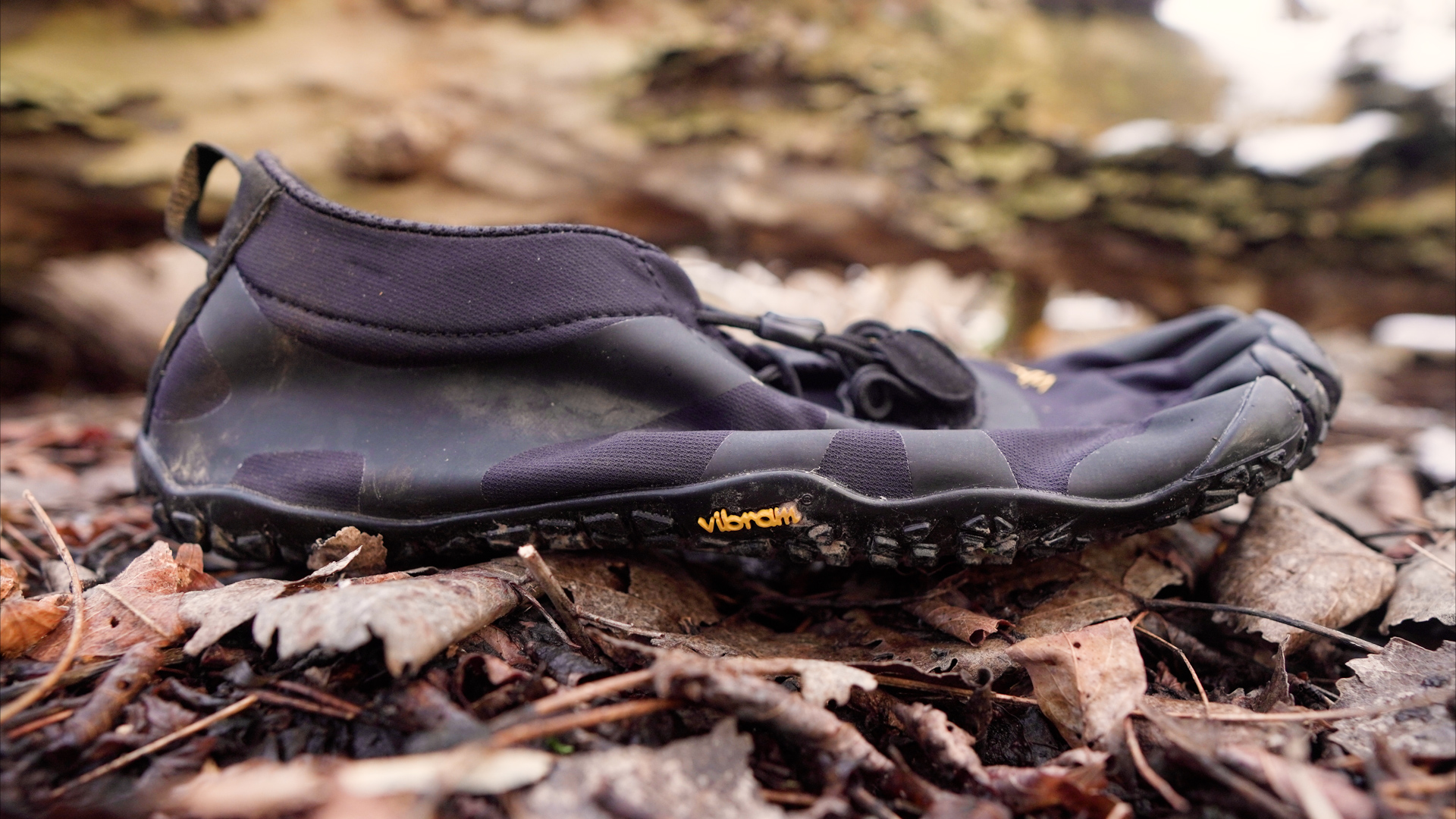
24. Vibram V-Alpha (96%)
The Vibram V-Alpha has extra-wide separate toes, a lightweight wool blend upper, ultra thin 3.7mm zero-drop sole with superb flexibility, and aggressive tread for roads and trails.
What’s incredible about the V-Alpha is that it’s featherlight at 147 grams but simultaneously the Vibram Megagrip tread is just as durable and versatile as barefoot shoes at twice the weight, while the wool upper provides some amazing breathability for hotter hikes and trail runs, although it is more vulnerable to scrapes and tears.

25. Vibram V-Trek (96%)
The Vibram V-Trek has extra-wide separate toes, a tougher wool blend upper, thin 4mm zero-drop sole with superb flexibility, and hybrid tread for roads and trails.
Being taller and thicker the V-Trek can handle colder days a bit better than the V-Alpha and the upper offers more protection for rough terrain, while the flatter tread wears better on pavement and sharp rocks, although, like any toe shoe, water will come straight in through the toes, which makes them less practical for cold/wet days.
Barefoot Boots
When I first transitioned to zero-drop I figured I’d still have to wear clunky traditional boots in the winter or for more serious treks, but it turns out that barefoot boots provide plenty of protection and warmth, especially when paired with Injinji wool toe socks and thermal insoles.
Casual Barefoot Boots
For casual boots you can often get away with only 4–5mm of sole between your feet and the ground, which is a literally mind-blowing feeling after spending years after wearing thick-soled boots that like clomping around on a couple blocks of wood.

26. Magical Chelsea Boot (81%)
The Magical Chelsea Boot has a wide toebox, leather upper, side zip, warm wool insulation, thin 4mm zero-drop sole with excellent flexibility, and a semi-aggressive tread for roads and trails.
In terms of weight to warmth ratio, it’s hard to beat the Magical Chelsea and the tread has some nice versatility for roads and trails, although the toebox does taper a bit in front and overall they’re better for snow and dry conditions.
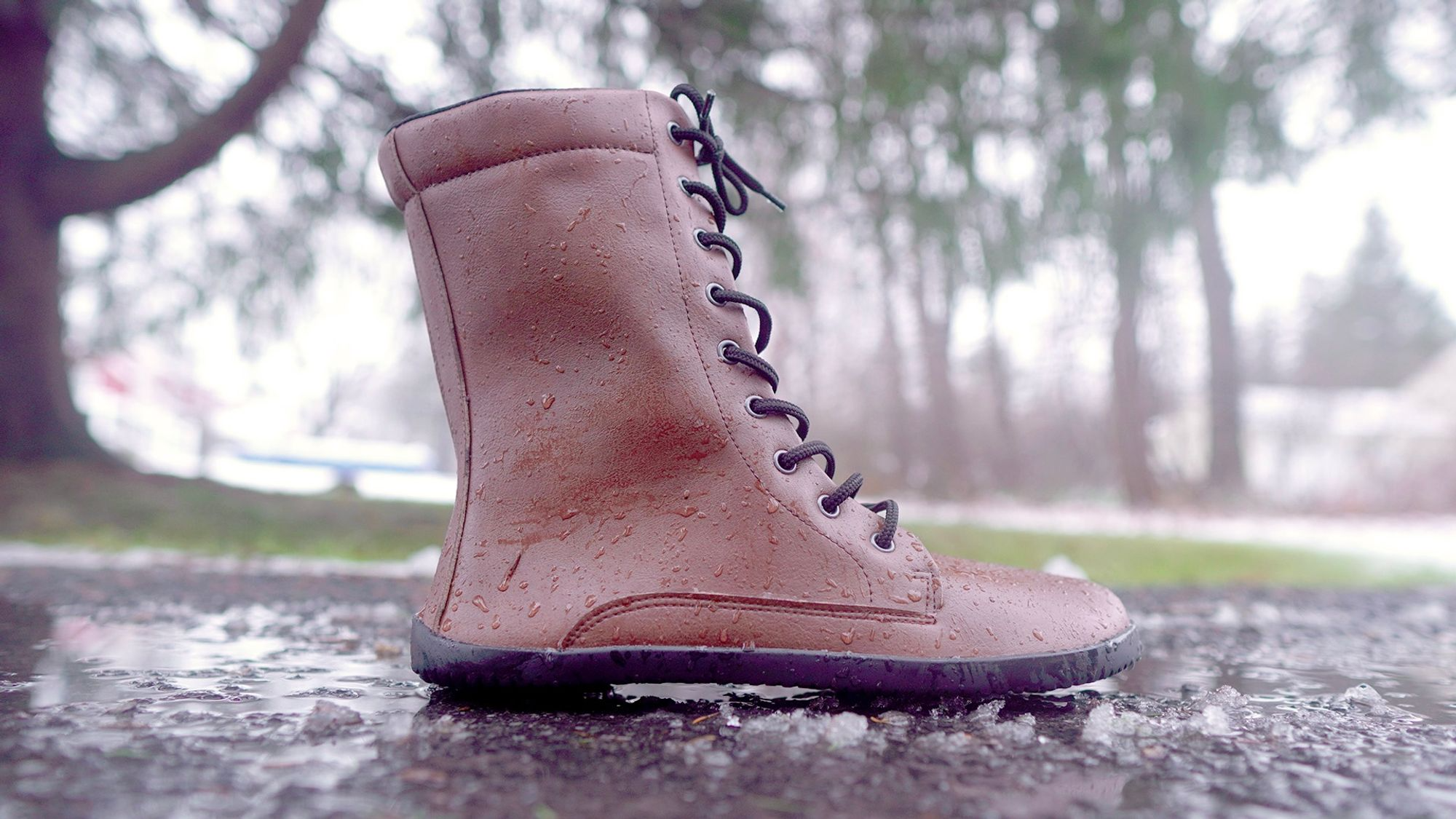
27. Ahinsa Jaya (83%)
The Ahinsa Jaya has a wide toebox, vegan leather upper, lightweight insulation, thin 4mm zero-drop sole with superb flexibility, and minimal tread for roads and light trails.
While it looks like a combat boot, the Jaya is featherlight at only 267 grams and agile enough to run in, as well as being highly water resistant, although their volume is fairly low and they can soak through if they stay wet long enough.

28. Be Lenka Winter Boot (89%)
The Be Lenka Winter Boot has an extra-wide toebox, water-resistant leather upper, warm wool insulation, medium thick 8mm zero-drop sole with great flexibility, and aggressive tread for roads and trails.
Being one of the warmest barefoot boots I own, the Winter Boot rarely needs more than a thin pair of Injinji wool toe socks, even down near zero degrees, and the angled lugs are super versatile for both roads and wet slushy hills, although the glued sole did start to separate a bit after my second winter.
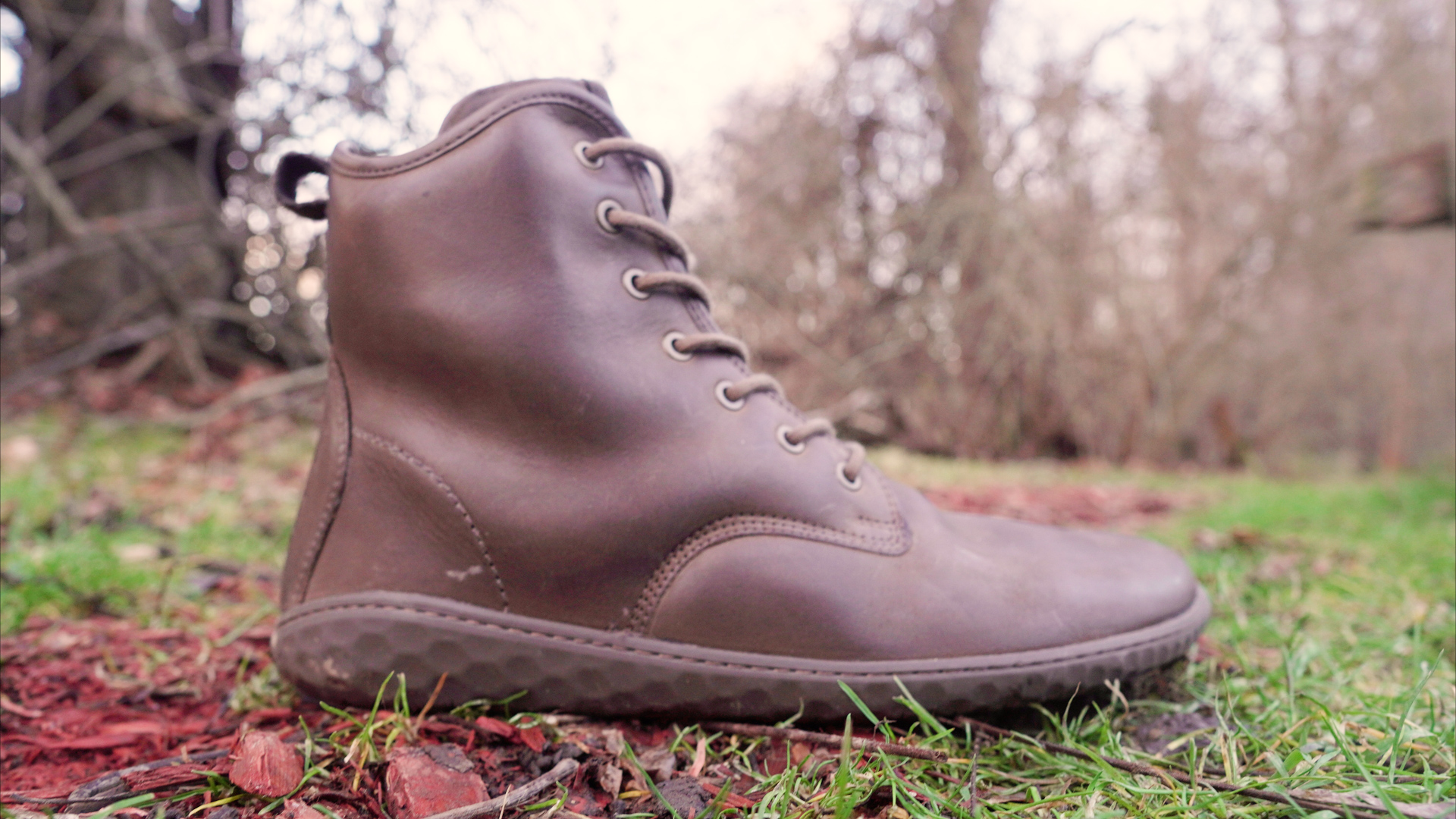
29. Vivobarefoot Scott (93%)
The Vivobarefoot Scott has a wide toebox, water-resistant leather upper, vegan wool insulation, thin 4mm sole with excellent flexibility, and a minimal tread for roads and light trails.
While similar in design to the Ahinsa Jaya, the Scott feels more structured and protective, which makes it a great lightweight work boot for colder weather, although the toebox does taper at the tip and it can take a week or two for the leather to soften up a bit.
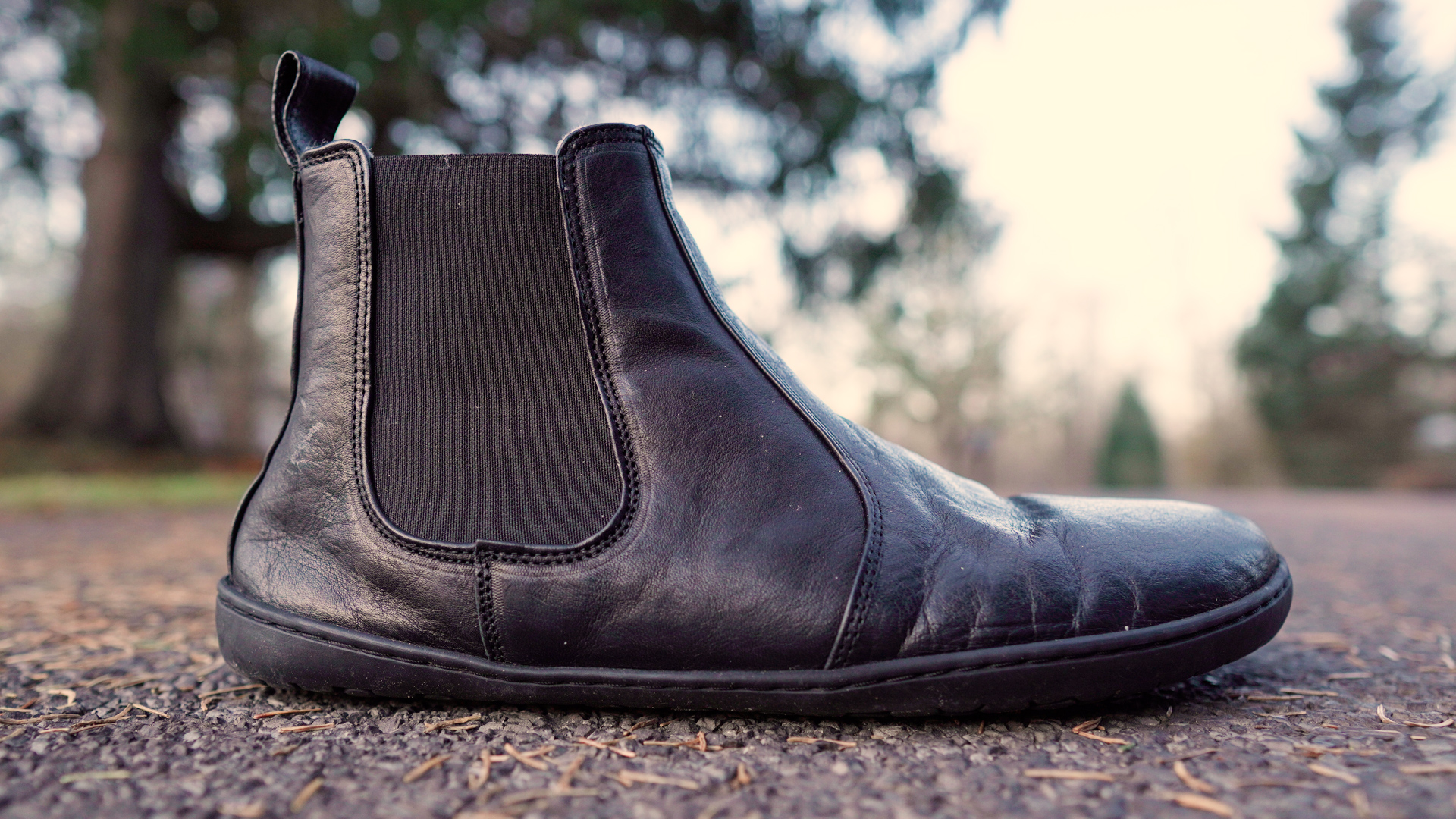
30. Mukishoes Chelsea Boot (93%)
The Mukishoes Chelsea Boot has a wide toebox, water-resistant leather upper, warm wool insulation, thin 3.5mm zero-drop sole, and minimal tread for roads.
Like the Magical Chelsea, the Mukishoes Chelsea is ridiculously warm but even lighter at 251 grams and somewhat better for wet conditions, due to the wraparound sole, although the tread is not as durable for rough terrain, like gravel.
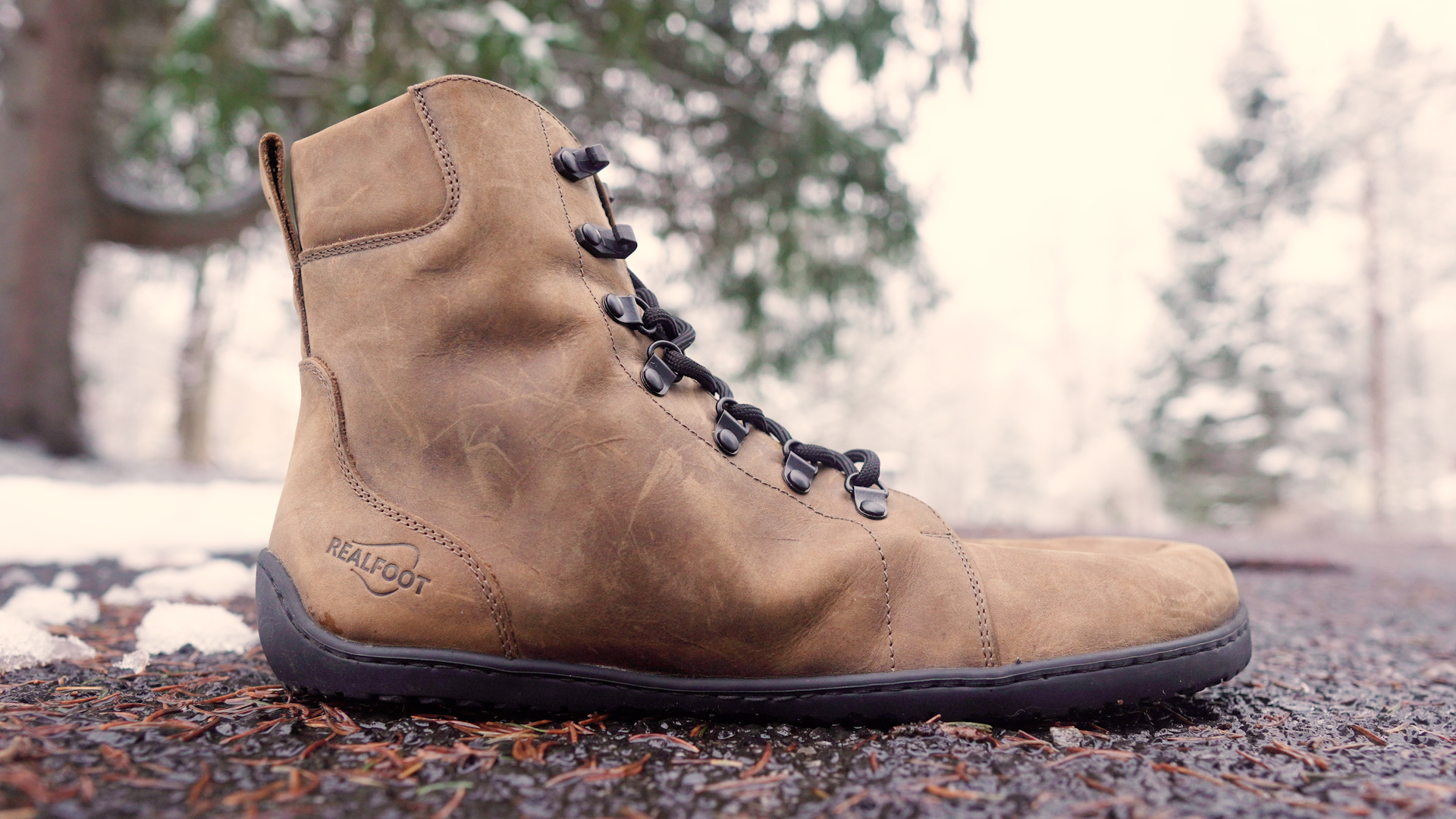
31. Realfoot Farmer Winter/Spring (94%)
The Realfoot Farmer has an extra-wide toebox, lightweight leather upper, optional synthetic insulation, thin 4mm zero-drop sole, and semi-aggressive tread for roads and light trails.
Basically, the Farmer is a wider version of the Ahinsa Jaya with a slightly tougher sole for walking on gravel, although not as much water resistance or warmth for wetter colder days.
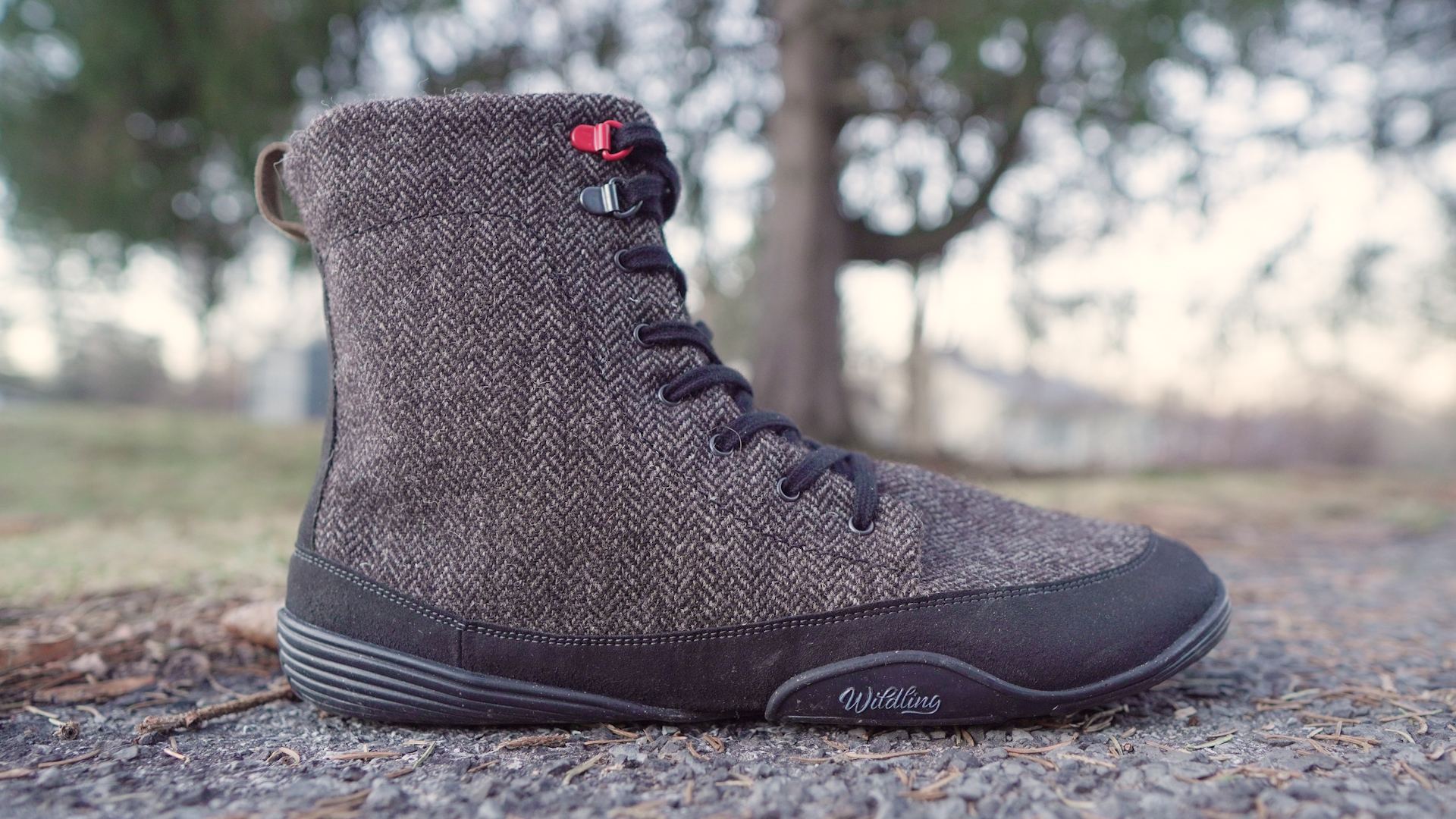
32. Wildling North Wolf (94%)
The Wildling North Wolf has a medium wide toebox, herringbone wool upper, water-resistant membrane, thin 3.5mm zero-drop sole with excellent flexibility, and minimal tabi tread for roads and dry trails.
Design wise the North Wolf is the most unique barefoot boot I own and it’s basically a herringbone suit for your feet, as well as being so freakishly light that I often forget I’ve even got boots on, although the toebox is a little snug and the membrane can overheat indoors.

33. Vivobarefoot Gobi Boot/Winterized (94–95%)
The Vivobarefoot Gobi Boot has a wide toebox, water-resistant leather upper, Winterized version with faux wool insulation, thin 4mm zero-drop sole with excellent flexibility, and minimal tread for roads.
Overall the Gobi Boot feels like a perfect combination of every casual barefoot boot I’ve tried being borderline waterproof, solidly warm down below freezing, agile yet durable on light trails, and roomy enough for most foot shapes, although not quite extra-wide.
Barefoot Hiking Boots
The first time I went on a backpacking trip I wore these super heavy Merrell Boots and by the end my feet were just killing me, but now I can hike all day in nothing but a 4mm pair of barefoot shoes with no pain.
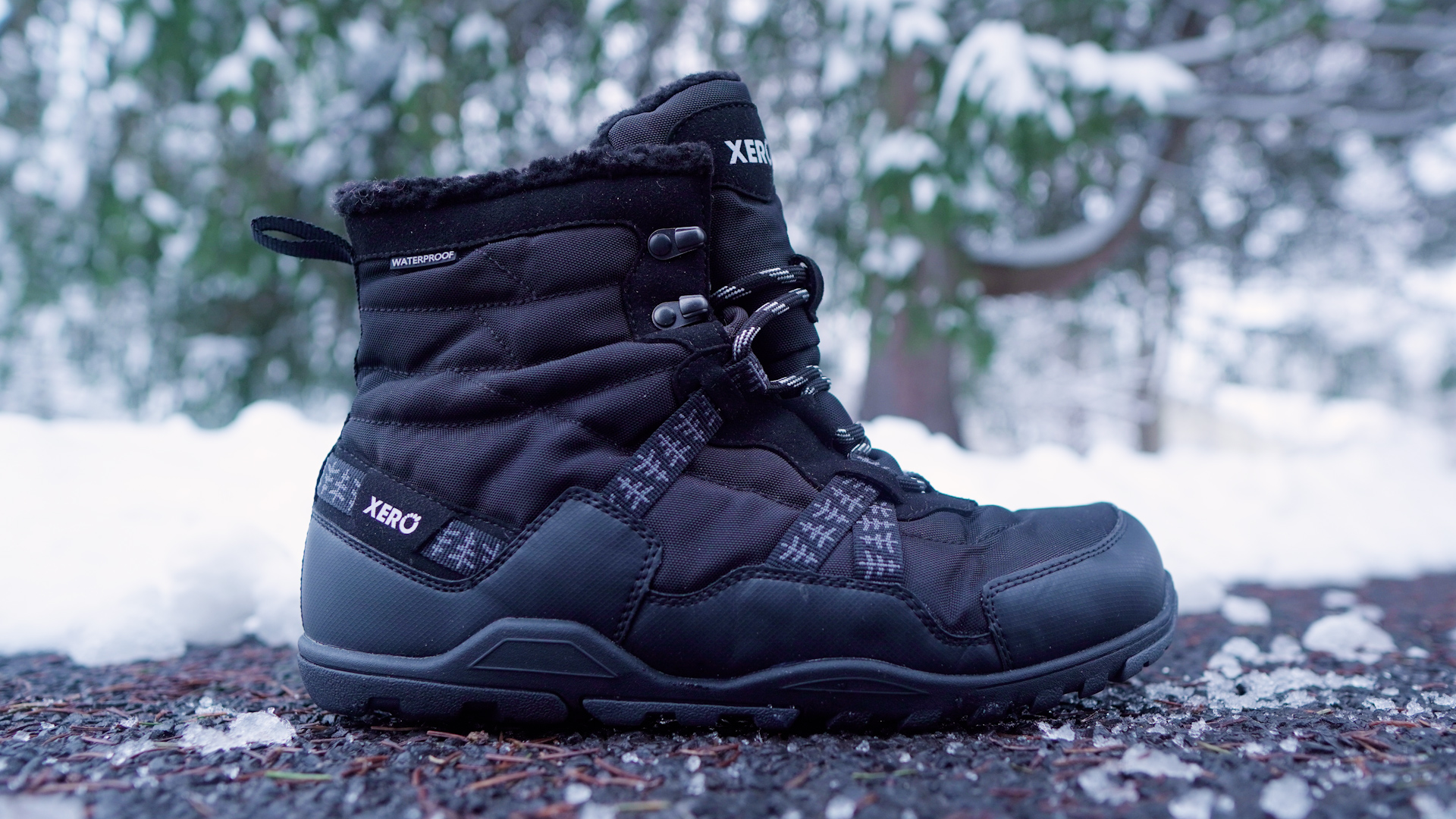
34. Xero Alpine (71%)
The Xero Alpine has a wide toebox, waterproof vegan upper, synthetic insulation, thick 9mm zero-drop sole with moderate flexibility, and aggressive tread for soft ground trails.
True to its name the Alpineis great for wading through snow and slogging up and down steep hills, but although the rugged sole is super protective it does feel like overkill for casual hikes.
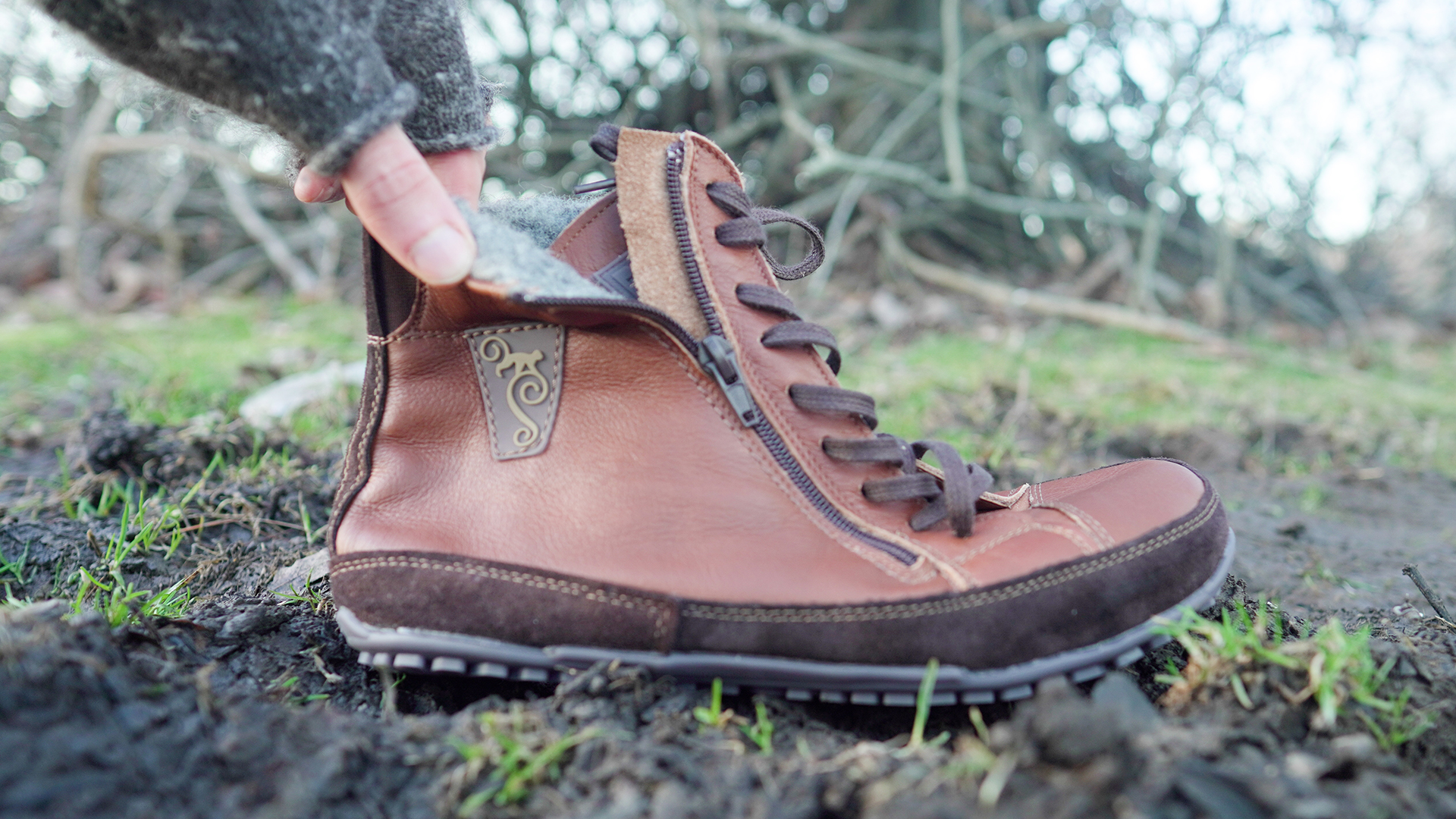
35. Magical Shoes Alaskan (79%)
The Magical Shoes Alaskan has a wide toebox, water-resistant leather upper, side zip, warm wool insulation, thin 6.5mm zero-drop sole with excellent flexibility, and semi-aggressive tread for roads and light trails.
Like the Magical Chelsea, the Alaskan’s puffy wool lining feels extremely comfortable, while the side zip and hybrid tread make it convenient and versatile all-terrain use, although it’s still vulnerable to water around the sole and doesn’t have enough grip for steep slippery hills.

36. Saltic Easy (80%)
The Saltic Easy has a wide toebox, heavy toe protection, rugged suede leather upper, thin 3.7mm zero-drop sole with moderate flexibility, and minimal tread for roads and dry trails.
Because of the front toe guard, the Easy is about as close to a barefoot safety shoe as you’ll find and while the sole is thin it’s also extremely dense, which provides some great protection from nails and glass, although the it can feel somewhat stiff for longer walks and for hotter weather you might want to go with the Saltic Outdoor, which doesn’t have the membrane.

37. Xero Denver (88%)
The Xero Denver has a wide toebox, canvas or leather upper, vegan insulation, medium 5.5mm zero-drop sole with great flexibility, and semi-aggressive tread for roads and trails.
During the colder months the Denver’s are one of my most used barefoot boots, because they’re agile yet tough and feel comfortable both walking on roads and hiking along rocky trails, although the synthetic lining can get hot over sixty degrees and the leather version does have better water-resistance.
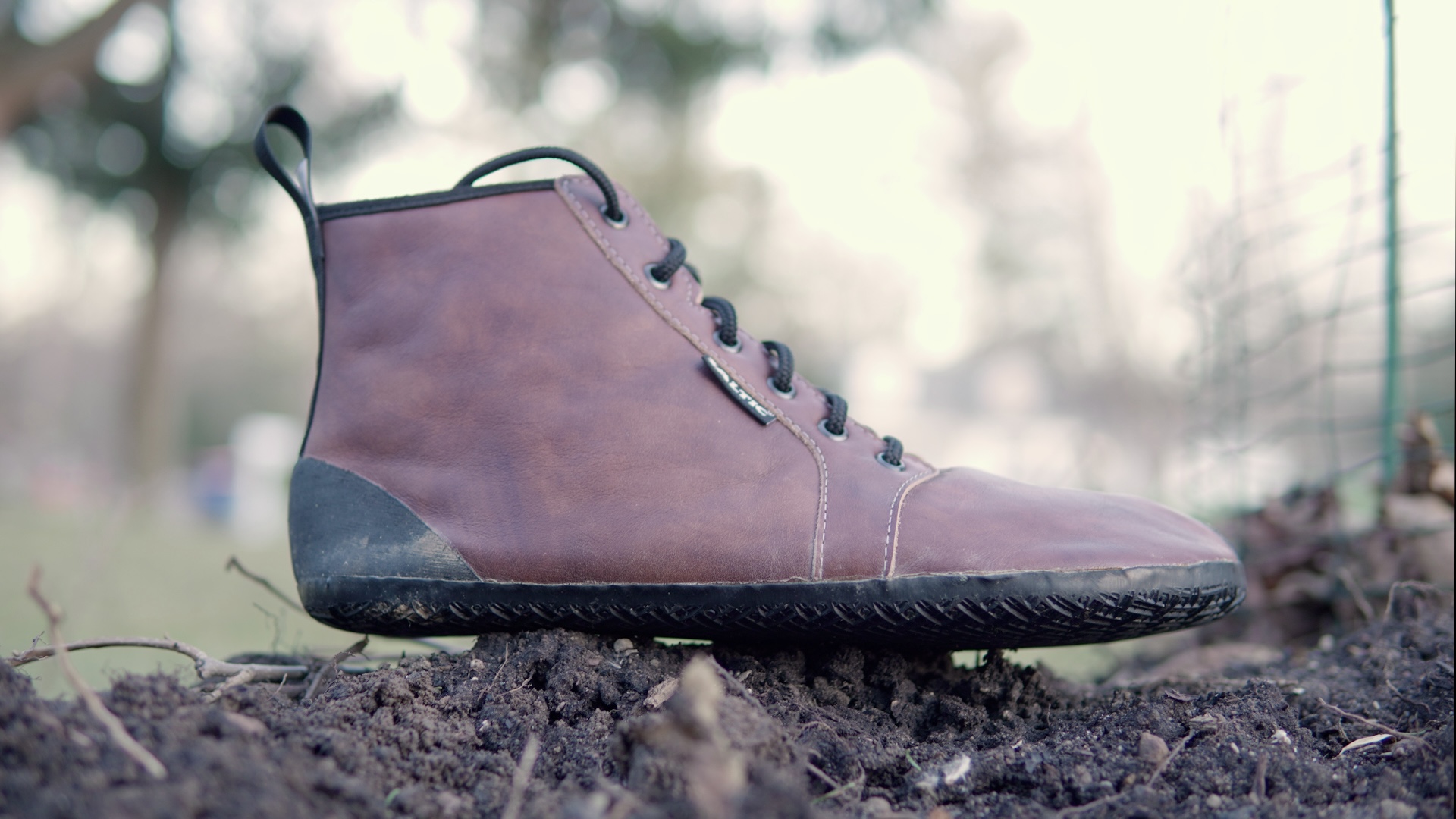
38. Saltic Vintero (90%)
The Saltic Vintero has a wide toebox, leather upper, waterproof membrane, thin 3.7mm zero-drop sole, and minimal yet durable tread for roads and trails.
Essentially the Vintero is a lighter-weight version of the Saltic Easy with some stripped down toe protection, higher water resistance for muddy conditions, and a crosshatch tread that’s surprisingly tough, although less flexible and not deep enough for steep slippery hills.
39. Vivobarefoot Tracker Textile/FG (81–90%)
The Vivobarefoot Tracker has a wide toebox, waterproof upper, and comes in either the leather FG, which has a 5.5mm firm ground sole, or the vegan Textile, which has a 7mm hybrid sole.
Because of its padded collar the Tracker feels very reminiscent of a traditional hiking boot, but the medium tread provides a much better balance of protection and ground feel to keep your feet from aching on longer treks, although the waterproof upper can start to overheat above seventy degrees.
40. Vivobarefoot Tracker Winter SG (93%)
The Vivobarefoot Tracker Winter SG has a wide toebox, waterproof leather upper, wool insulation, medium thick 7.5mm zero-drop sole, and aggressive tread for soft ground trails.
For snow, slush, and mud the Tracker Winter is like owning a cold weather tank but with some solid breathability and agility that you won’t find in similar boots, although you do have to stack up some wool socks and the lower back can let in snow over the top.
41. Vivobarefoot Tracker Decon (95%)
The Vivobarefoot Tracker Decon has a wide toebox, suede leather upper, breathable wool blend collar, medium 7mm zero-drop sole with excellent flexibility, and hybrid sole for roads and trails.
Unlike the original Tracker FG, the Decon is made with a softer leather that’s agile enough for faster hikes, or even a bit of trail running, and the FG2 sole has some great versatility for both dry and wet terrain, although it can get worn down faster on roads.
42. Vivobarefoot Tracker Forest ESC (93%)
The Vivobarefoot Forest ESC has a wide toebox and water-resistant leather upper, high-cut Tracker or wool Magna collar, beefy 9.5mm sole with great flexibility, and aggressive Michelin tread for hardcore trails.
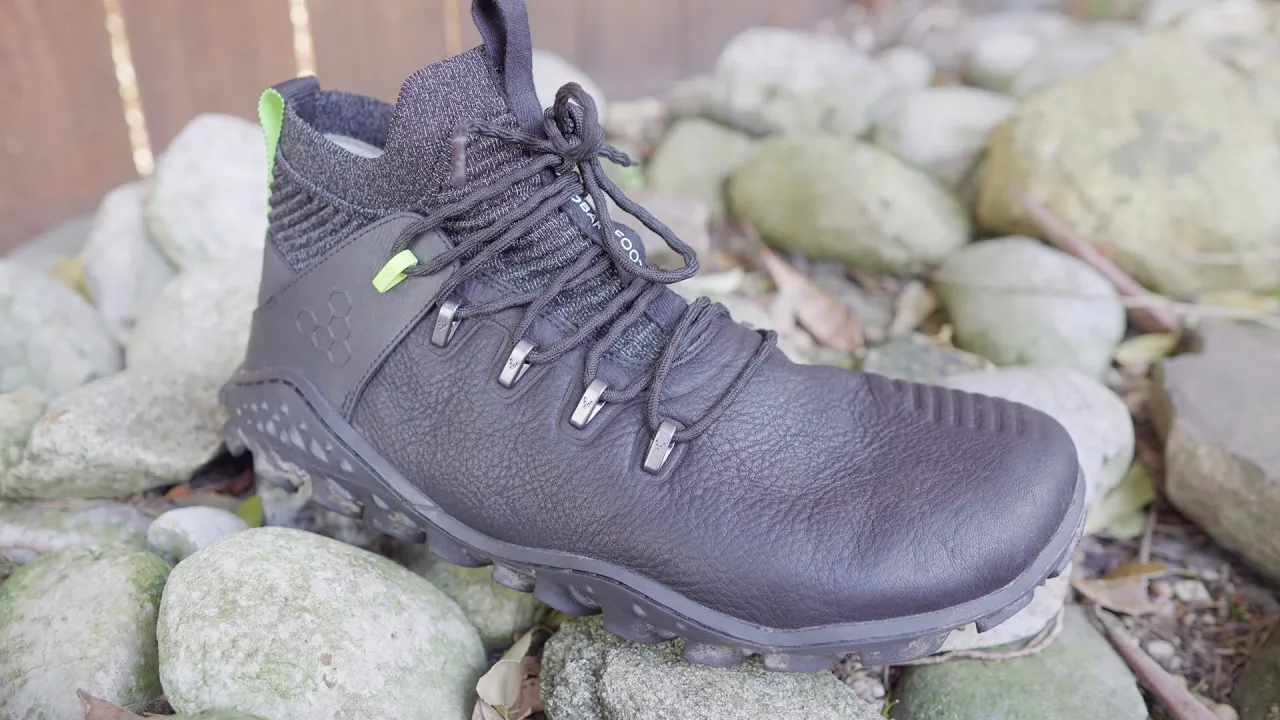
43. Vivobarefoot Magna Forest ESC (96%)
For hotter climates and faster hikes the Magna Forest ESC provides some nice breathability and agility, while the Tracker ESC is better for cooler weather and wet conditions, but although the tread is versatile for both sharp rocks and slippery mud, it is heavier and can feel like overkill for casual hiking.
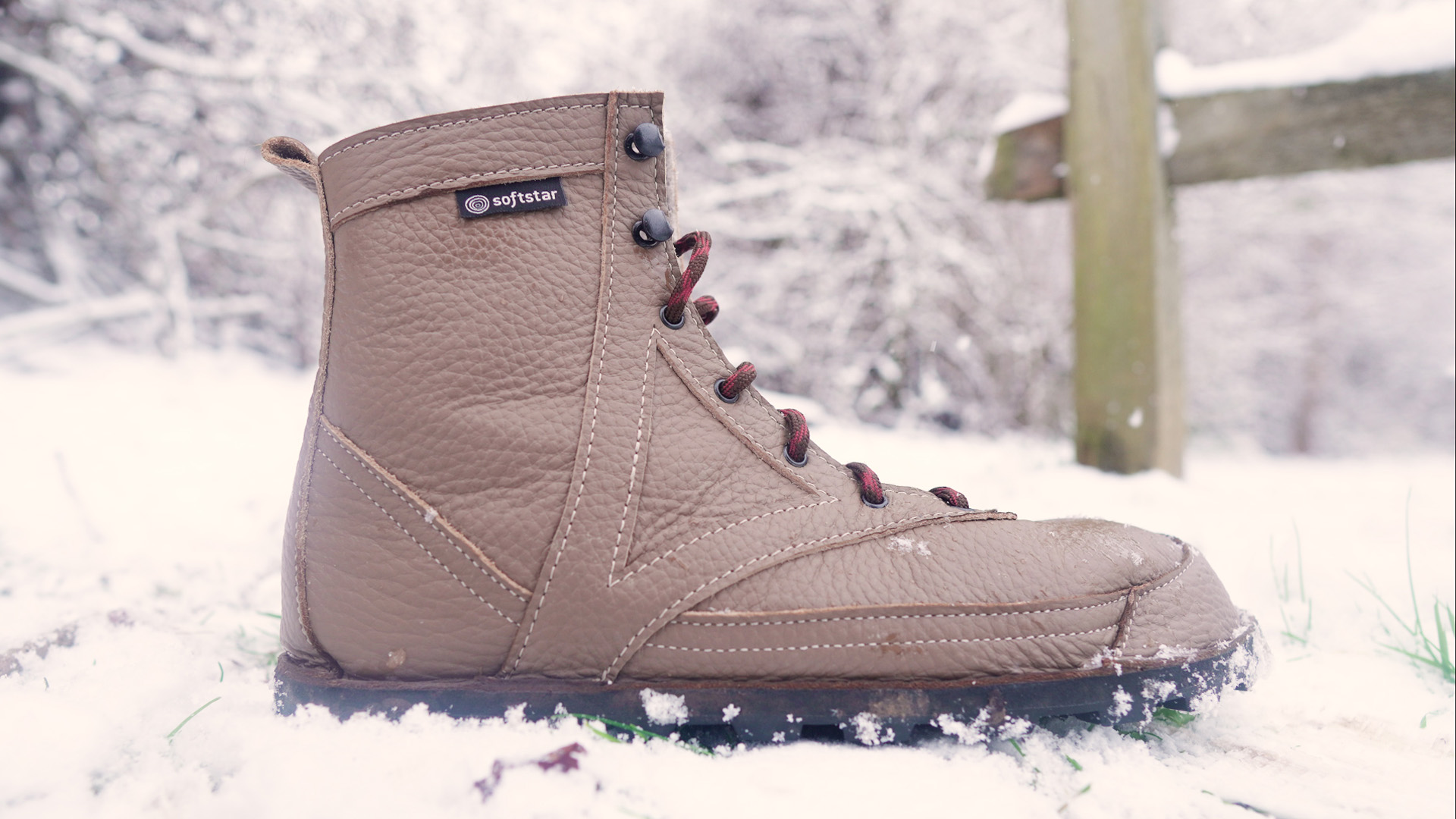
44. Softstar Switchback (96%)
The Softstar Switchback has a wide or extra-wide toebox, soft leather or vegan upper, warm wool insulation, thick 9.5mm zero-drop sole with great flexibility, and aggressive Vibram Megagrip tread for roads and hardcore trails.
Being almost 10mm you’d expect the Switchback to feel cumbersome, but the lightweight leather and bendy Megagrip rubber literally make it agile enough to use for trail running, while still offering some of the best durability, traction, and temperature regulation of any barefoot boot, although it does have less ground feel and lower water resistance.
Barefoot Sandals
While barefoot shoes get most of the attention, a good pair of barefoot sandals can be just as versatile with the added benefit of being more breathable for summer and light enough to stow in a pants pocket!
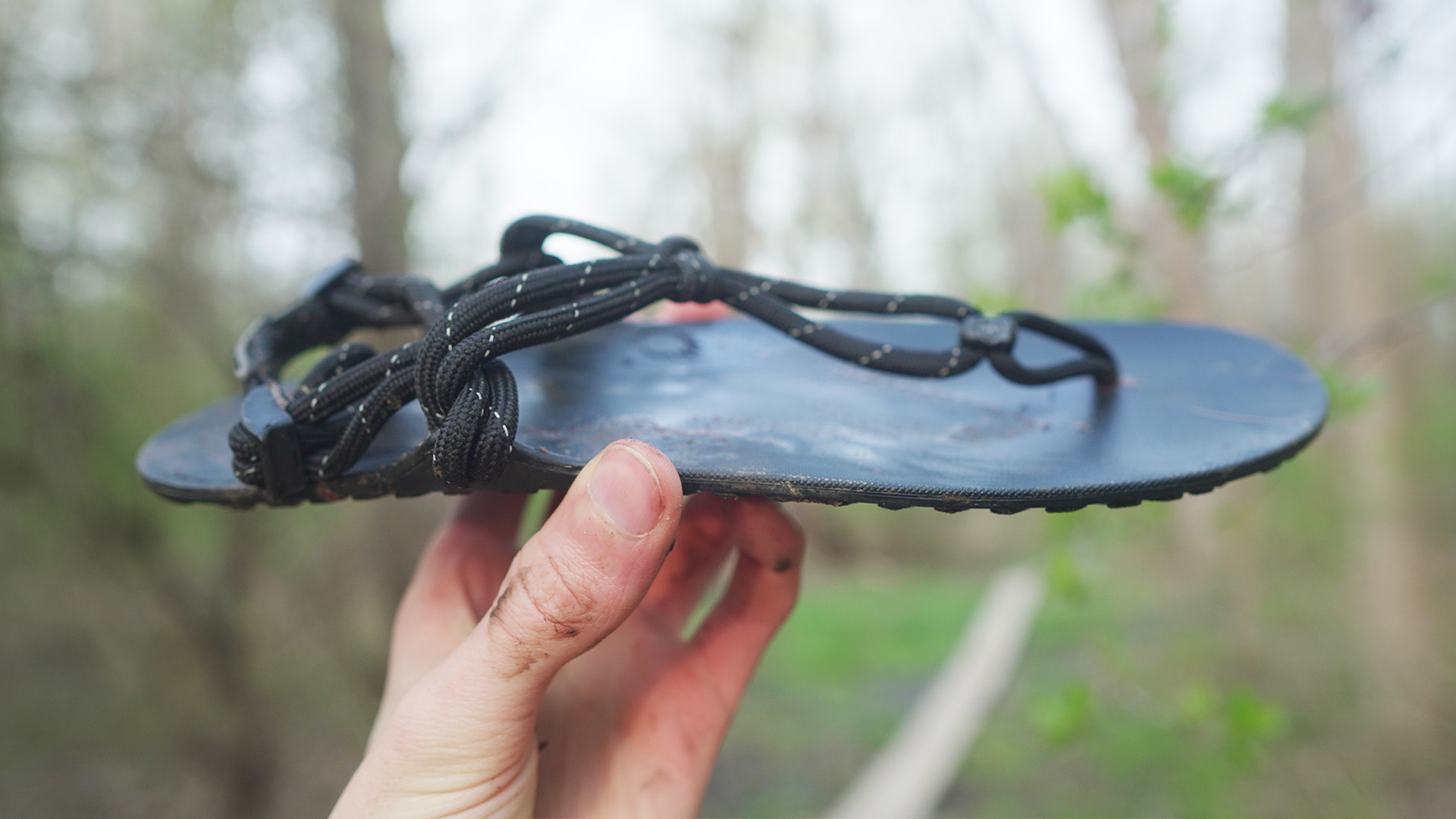
45. Xero Genesis (73%)
The Xero Genesis has a medium wide toebox, minimal huarache cord straps, medium 5mm zero-drop sole with excellent flexibility, and semi-aggressive tread for roads and trails.
Despite it’s slim lacing the Genesis is actually quite comfortable for hiking and trail running and it’s also one of the only barefoot sandals I’ve tried that’s thin enough to feel comfortable for walking and running on roads, although the lack of support isn’t as practical for steep hills.
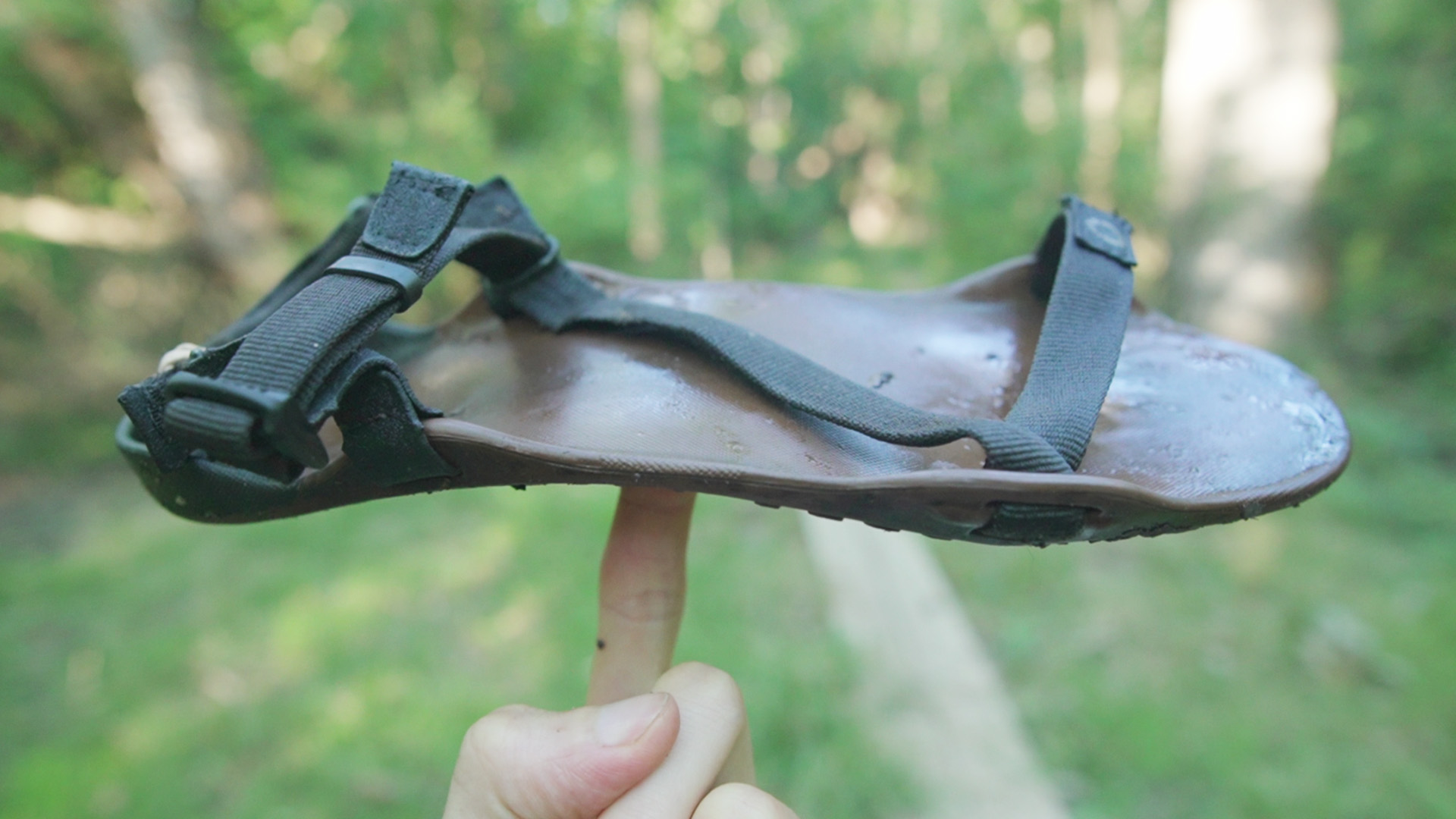
46. Xero Z-Trek (75%)
The Xero Z-Trek has a medium wide toebox, soft cross straps, medium 6mm zero-drop sole with excellent flexibility, and semi-aggressive tread for trails.
While you might be skeptical of Xero’s 5,000-mile warranty, my original Z-Trek’s are still going after seven years of trekking and the lack of anything between your toes makes them nice for casual use, although the sole does feel a little hard on roads and the rubber footbed can get slippery in wet conditions.
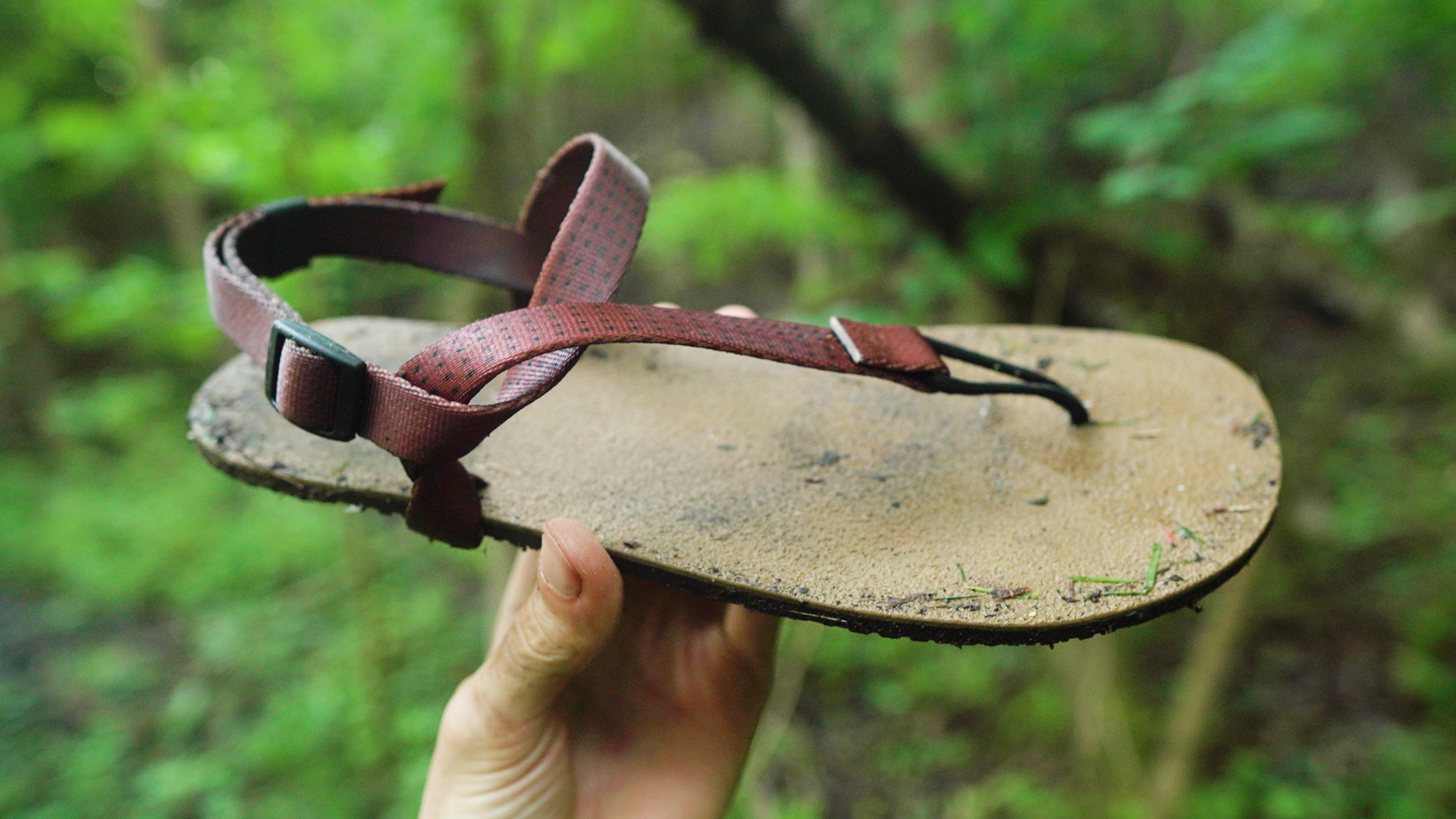
47. DLD Perception (78%)
The Deliberate Life Designs Perception has a custom toebox, multiple strap options, thicker 7mm zero-drop sole, and semi-aggressive Vibram tread for rougher trails.
Because each DLD sandal is fully customizable, they’re a great option for anyone with picky feet, but I loved the grippy/textured footbed on my Perceptions, and the combo of wider straps and Vibram rubber made them a powerhouse for rocky terrain, although they do feel like overkill on roads.
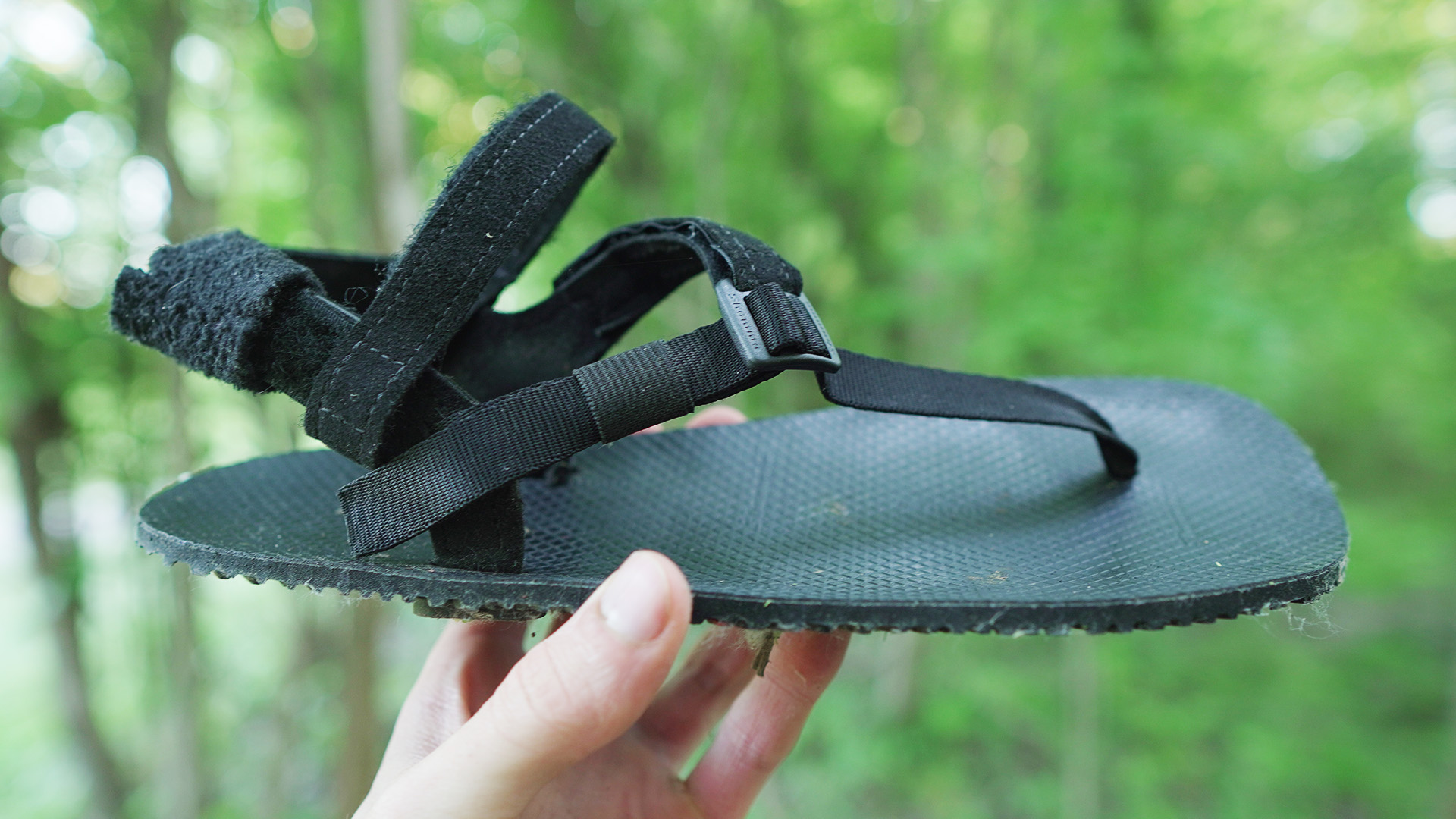
48. Shamma Warriors (81%)
The Shamma Warriors have a wide toebox, vegan or leather footbed, high support strap system, medium 5mm zero-drop sole with great flexibility, and Vibram tread for trails.
For anyone who likes sandals but finds them a bit insecure, the Warriors have the best lockdown in the world for faster hikes and trail runs with a super durable Vibram sole, although I did have to add some DIY padding on the posts, which are a bit hard.
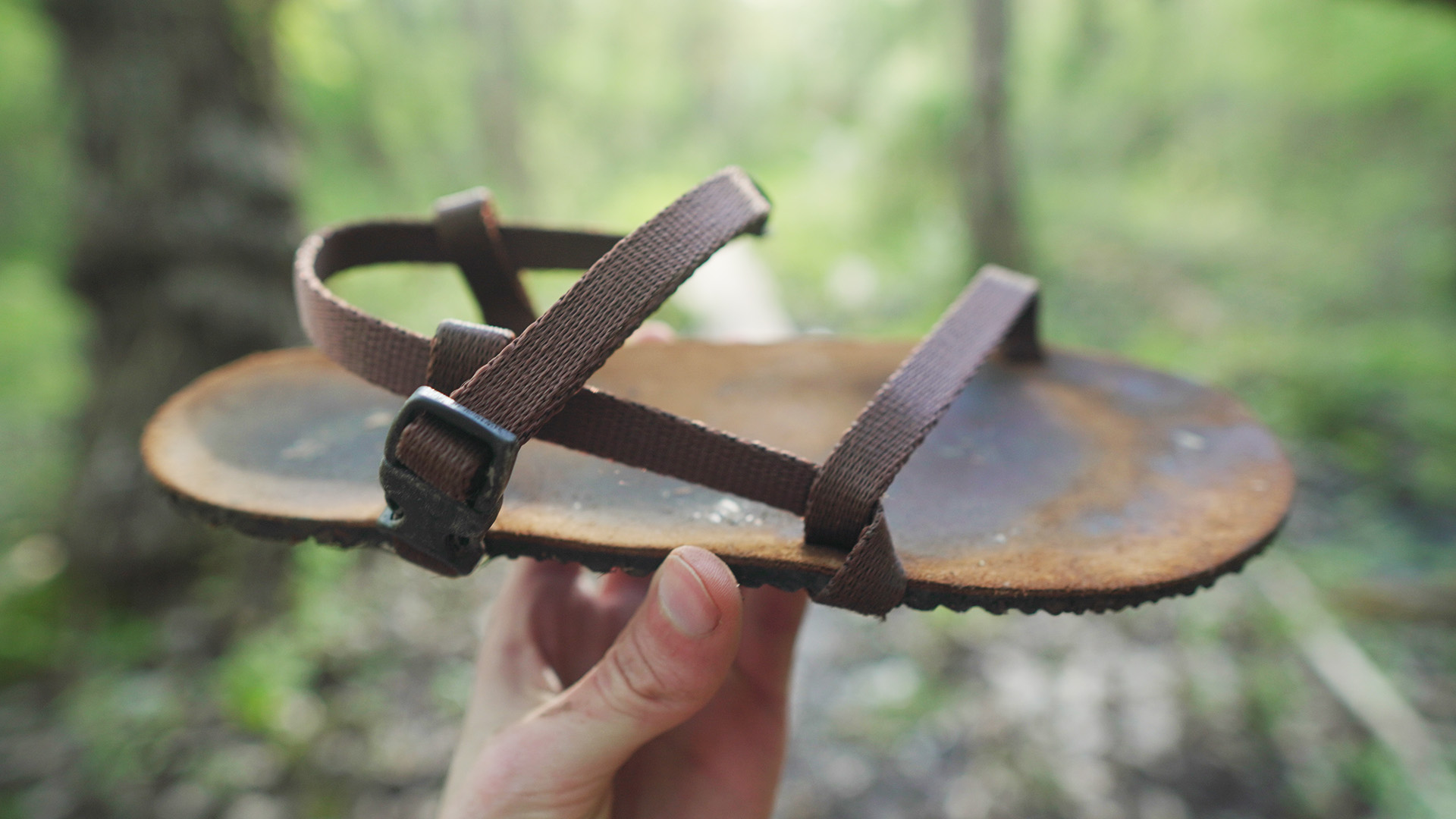
49. Monk Ruivo (94%)
The Monk Ruivo has an extra-wide toebox, leather footbed, cross straps, medium 5mm zero-drop sole with great flexibility, and semi-aggressive Vibram tread for trails.
Basically the Ruivo’s are a more classy version of the Shamma Warriors but with minimal cross straps that some people might like better for casual use, although it does make them slightly less secure for trail running and the sole also feels a bit hard on roads.

50. Toetem Alpha BlackBear (98%)
The Toetem Alpha BlackBear has an extra-wide toebox, premium leather footbed, soft huarache straps, medium 5mm zero-drop sole with great flexibility, and semi-aggressive Vibram tread for trails.
While some toe thong sandals can be uncomfortable, the BlackBear’s feel completely natural and have a nice balance of agility and support for hiking and trail running with tons of room for toe splay, although, as with the others, they do feel somewhat hard on roads.

Barefoot (100%)
Finally, bare feet have a custom toebox, premium human footbed, and infinitely regenerative callus tread for roads and trails.
Let’s face it, as light and flexible as barefoot shoes can be, they’ll never match the joy of being completely barefoot and getting to feel the world without any limitations or money spent, although for terrain with broken glass, thorns, or snow, it’s always nice to have some minimal footwear as a backup.

Conclusion
So those are the best fifty barefoot shoes I’ve tried, but, honestly, this list only scratches the surface—and maybe next time I’ll have to go even bigger with a “Best 100 Barefoot Shoes” video!
Resources
That said, you can always browse and filter hundreds of styles with the shoe finder tool at my website barefootwear.org or watch my Zero-Drop Transition video to learn more about barefooting.
Finally, if you have a question about choosing barefoot shoes or want to request a future review video, let me know in the comments.
Thanks for reading, catch ya next time. Peace!
Andrew Folts
Andrew is a writer/filmmaker who creates video guides and reviews for a community of 25K+ creative rebels on YouTube.